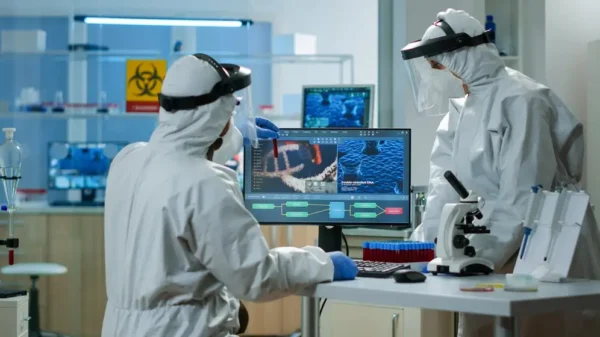Introduction
Invention of Medical Equipment has seen tremendous development for the past decades transforming the health care scenario and saving thousands of lives. Easy to use technology has been the greatest driving force in such developments. Innovations have bettered diagnostics and patient care by ensuring easier treatment with effective management of patient care for better health care. Wearable devices for real time monitoring of vital signs robotic surgical systems executing. Minimally invasive operations are examples of how easy technology has turned medical equipment into truly vital tools of modern medicine. This paper considers the role that easy technology played in the development and progression of medical equipment. Improved patient care, diagnosis, treatment and general health result.
Role of Technology in Invention of Medical Equipment
Innovation in Diagnostic
The area greatly affected by easy technology is the diagnostic equipment. The detection and monitoring methods for different types of medical conditions have become less complicated with the advancement of technology. It has made diagnostics faster and more accurate. For example portable devices such as handheld ultrasound and wearable health monitors. Allows doctors to determine the diagnosis in real time in earlier stages with greater accuracy. These inventions can be reached and are user friendly and a healthcare professional can offer better care even in remote areas. Due to this easy technology in diagnostics better patient outcomes and reforms in the medical treatment have been seen.
Portable Diagnostic Devices
With devices being more portable due to technology being accessible and easy to use diagnostic devices are more portable. For example, handheld ultrasound devices like Butterfly IQ have made it possible to carry out bedside or remote location ultrasound scans without the bulky machines around. In this way all patients in rural or under-served areas receive similar diagnostic care as in an urban hospital. The ease of use of the devices also reduces the training time of medical staff which would enable faster and wider adoption.
Wearable Health Monitors
With wear able monitoring personal health has become a game-changer and patients could now track in real time their heart rate, blood pressure or even glucose levels. For example the smartwatches and even fit trackers include the sensors that would allow it to monitor various health metrics. The latest Apple Watch has electrocardiogram functionality that would enable users to track rhythmsmonitor for atrial fibrillation etc. These user-friendly wear able not only empower a patient into the service of taking control of one’s health but also provide doctors with valuable data for early diagnosis and further care.
Advanced Treatment Equipment
Robotic Surgery Systems
One of the best examples on how easy technology has managed to revolutionize medical treatment is in robotic surgery. Da Vinci Surgical Robot gives surgeons the ability to do some procedures which are very precise in the most minimally invasive way with the use of robotic arms. Such systems allow dexterity and precision beyond that of any human hand thus minimizing the chances of complications and accelerating the process of recovery. With user-friendly interfaces these robots allow surgeons to do delicate surgery much more precisely therefore this enhances the patient experience as well as the provider experience.
3D Printing in Medicine
Another innovative technology that has become worthwhile to mention is 3D printing which makes it easy to manufacture customized medical equipment. Health care providers can now boast the use of simple software and printing technologies that make possible customized prosthetics, implants or even tissue scaffolds. What once seemed impossible easy technology made it possible for doctors to tailor treatment to a patient’s needs. For example, orthopedic implants 3D printed according to the specifications of every patient are promising the perfect fit with the consequent better results and recovery for the patient.
Telemedicine and Remote Patient Monitoring
Telemedicine Platforms
Invention of Medical Equipment: Teladoc and Am well have had to simplify video conferencing for the administration of healthcare services mainly during consultation saves the doctors’ and patients’ time. Healthcare has been made easier to access from remote areas or not so well covered catchments. Electronic health records can be incorporated whereby health care givers will get a chance to access the patients’ medical history during the virtual visit which maintains continuity and quality care. This convenience and advancement in the technology system combine to make the patient’s experience even better as the overall healthcare services offered become more efficient and easily accessible. In consequence there is a wide likelihood that most patients will receive on time hence personalized medical care irrespective of their location.
Remote Patient Nursing Devices
Remote monitoring of patients is indeed one of the biggest developments in post-surgical care and chronic disease management. Devices for example continuous glucose monitors for diabetics and cardiac monitors for heart disease patients stream real-time data to health professionals thus monitoring the conditions of patients from a remote location. The technology is easy to use and enables timely changes in treatment plans with saving time for the patients and doctors alike because of frequent visits to clinics. Such devices aim at ensuring better outcomes in a patient by provision of proactive care. This thereby leads to reduced complications and enhanced health management in the body. This is achieved through continuous monitoring enabled by these devices.
AI and Machine Learning in Medical Equipment
AI-Powered Analytic
With recent advances in AI diagnosis, modern doctors have a totally new approach to analyzing medical data or even identifying diseases. The system allows one to process large volumes of medical images and patient data to identify specific patterns that might be missed by the human eye. For instance, AI can properly analyze radiology scans for early traces of cancer or other diseases. The flexibility incorporated in such tools to the usual workflow of a health provider makes them assets for a doctor to apply timely and accurate diagnosis.
Predictive Analytics
AI and machine learning are also possible for predictive analytics in the healthcare domain. Here the medical equipment can identify potential health risks very much in advance before they become serious conditions. For example, wearable devices with AI algorithm can analyze a patient’s critical vital signs. Predict the possibility of having a heart attack or stroke that allows early intervention. This prediction capability is a new trend towards proactive rather than reactive healthcare. In which easy technology allows medical professionals to prevent diseases rather than just treat them.
Review
Invention of Medical Equipment: Easy technology has redesigned healthcare through medical equipment by ensuring diagnostics treatment and care of patients reach further and easier. Portable diagnostic devices such as ultrasounds that fit in the hand and wearable monitors. Enable a doctor to collect real time data while monitoring a patient. Thus conditions are recognized earlier and with greater ease. AI tools work faster and with greater precision to work through huge volumes of medical data. Giving medical professionals quicker and more reliable insights. Advances in medical devices through robotic surgery and the 3D printing of prosthetics. Continue to refine surgical procedures and prosthetics to be even more accurate and customizable. We may envision smarter equipment better to use and that helps make care more accessible around the world with better results. Integrating easy to use technology would make health care more inclusive-both for the patient and provider.





